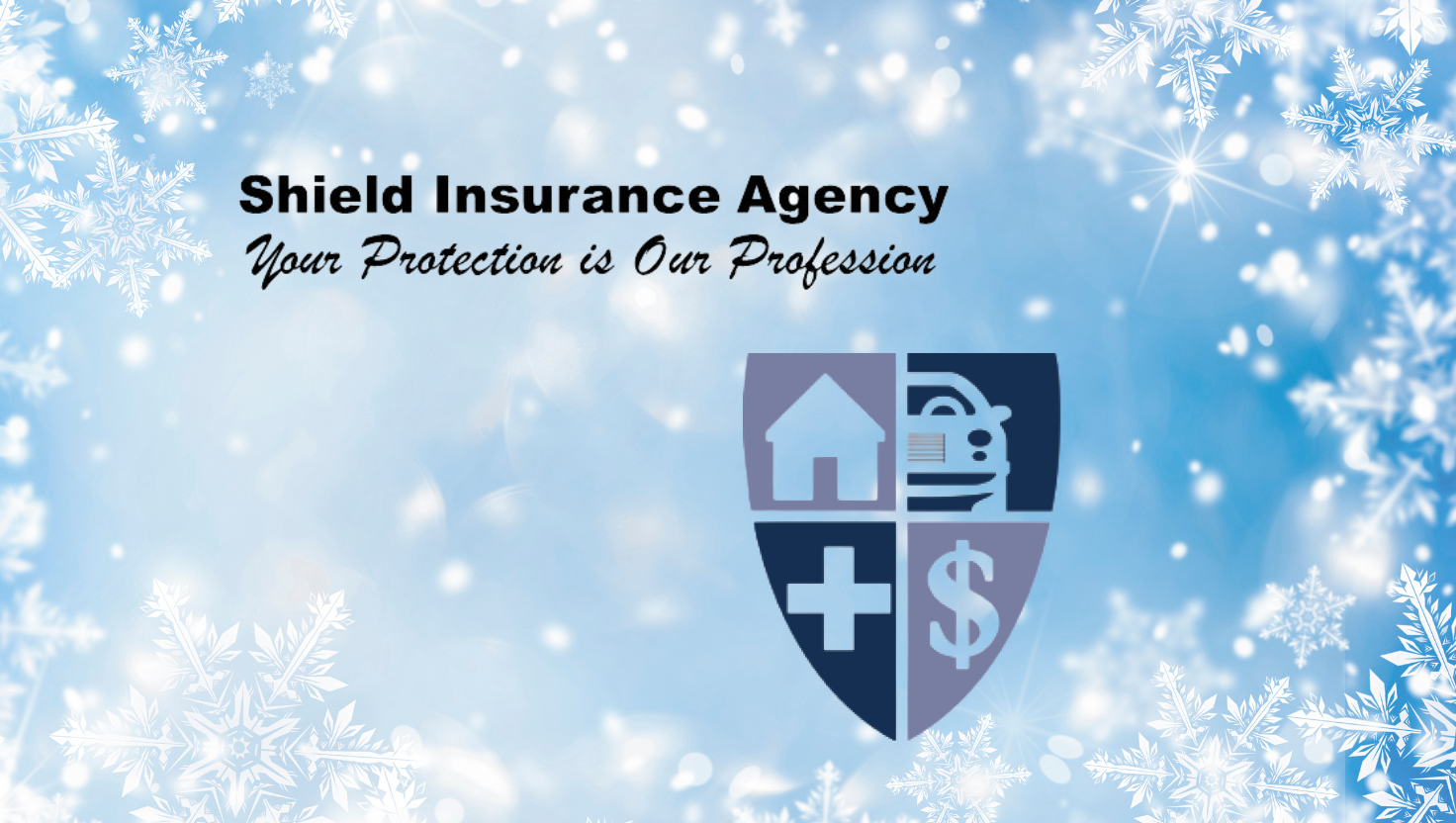Shield Insurance Blog | Winter Car Hacks | Auto Insurance |
Winter Car Hacks
Every winter I vow to be better prepared for all the unique challenges that winter driving presents but never really have gotten my act together. This year I vow to do things differently! To that end, I am making my list of handy tips and tricks and checking it twice! You can take a peek at it too!
Here are some of the most unexpected and helpful winter car care tips I have found to help survive winter driving:
Fixing foggy windshields
Cold months often mean constantly being plagued with fogged-up windshields and windows, a dangerous condition if you’re on the road. To quickly clear fog without leaving a smudgy mess behind, keep a chalkboard eraser in your car.
Alternatively, rolling down the window and letting some fresh air in will quickly defog windows.
Fog-PROOFING your windshield
- Put shaving cream on the inside of your windows and then wipe it off. Shaving cream has a lot of the same ingredients that commercial defoggers have, and it leaves a layer on the window to keep the fog off.
- Fill a stocking with kitty litter which absorbs water and keep that in your car overnight.
- Before you turn your car off each night, open the windows and let cold air in. The moisture from you breathing in your car will be replaced with dryer air.
- Don’t leave water bottles or other drinks in your car because the water becomes frost on the inside windows of your car.
- Also, the AC is one of the best defoggers around. The compressor takes the humidity out of the air.
SOCKS in the GLOVE box
Tons of people swear by this trick! During winter, keep a spare pair of socks in your car’s glove-box to put on OVER your shoes. This trick gives you better traction in case you have to push your car over ice, or you just need to walk in snow and ice for some reason.
Spare socks are cheap, compact, and always useful. Plus they’re convenient as a makeshift cloth in a pinch.
Socks as windshield wiper covers
Those extra socks can also come in handy for your wiper blades. Use an extra pair to cover your windshield wipers at night to keep the snow off of them. Raise the wipers off of the windshield and cover them up for easier de-icing in the morning.
Wiper blades are frozen to your windshield
Soak a soft cloth with full-strength rubbing alcohol and wipe each blade. The alcohol will keep the blades from sticking to the window so they’ll function properly even on the coldest day of the year.
Ice-Scraper in a pinch
If you find yourself with frozen car windows but no ice scraper, you have a couple of options – grab a spatula if you’re at a home, or use any plastic card in your wallet to get under the ice and scrape it away. Hopefully, you’ll never forget your ice scraper again! 🙂
Mother Nature’s windshield defroster
Whenever you can, make sure to park your car facing east. Since the sun rises in the east, it will naturally defrost your windshield in the morning so you won’t be stuck scraping ice in the cold. With this trick, you should be able to use your windscreen wipers to do the not-so-heavy lifting for you.
Cheap and easy DIY de-icer
If parking facing east isn’t possible (or the sun isn’t cooperating)…mix three parts vinegar with one part water and spray the mixture onto your windshield to prevent ice from forming.
Keep plenty of windshield washer on hand
Here is an easy do-it-yourself recipe using basic household ingredients – Homemade Windshield Washer Fluid.
De-ice frozen car doors, locks, and handles
There are several clever ways to do this:
Heat your car key with a match or lighter, then gently push the heated key into the lock to melt the ice as you apply pressure. Just be careful as that key will be hot!
Another option is to take a regular drinking straw and blow it directly onto the frozen lock. The heat from your breath should melt the ice in no time.
Rubbing your key or door handle with a squirt of hand sanitizer will have the same effect. The alcohol in the hand sanitizer will melt the ice and shortly allow you to unlock your car.
Keep doors from freezing
Sometimes putting WD-40 in the keyhole before the winter will keep any ice from forming in there in the first place.
Cooking spray in the cracks of your doors and on the rubber will prevent them from freezing shut at night. Water that melts during the day runs in between your doors and freezes, but cooking spray keeps the water from resting in the cracks in the first place.
Frosty side mirrors
To prevent ice from forming on side mirrors, cover them the night before with plastic bags secured with rubber bands or clothespins. When you remove the bags in the morning, the mirrors will be ice-free.
Increase headlight visibility
With the harsh weather and road conditions, headlights are especially important during the winter. Cover each light with toothpaste and rinse off with warm water. This will drastically improve the clarity of your lights and is MUCH cheaper than the kits they sell at the store that provide the same service.
Headlight protection
For added clarity, apply a layer of wax after you’ve removed the toothpaste. It will keep snow and water from sticking to them for weeks!
Keep your car’s “underthings” clean!
Make sure to clean your car often during the winter, as de-icing products can damage a car after prolonged exposure. To clean all the dirt, salt, and ice off the more difficult-to-reach under-carriage, run a lawn sprinkler underneath the car on a slightly warmer day. Just slide it under your car and drive back and forth over it. It will work wonders.
Easy ways to get un-stuck
Keep keeping a couple of twenty-pound bags of kitty litter in your trunk on snowy days. They’ll put some weight on your back tires — which is great for traction if you have rear-wheel drive — and if you do get stuck you’ll have something to provide a little traction. Just spread some under the tires and under your feet. A small shovel is helpful as well.
Another great trick for getting your car out of a snowbank? Your floor mats. Take out a floor mat and use that under the spinning tire. Place your front floor mats under your tires to give you some traction when on an icy surface. Just don’t forget to pick them back up after you get moving.
And a few more Winter Car Hacks
And finally……A quick & easy emergency kit
Hopefully, you’ll never have to use it, but if you do, it could be a lifesaver!
Unzip a winter coat.
Inside, place extra socks and underwear, knit hat, gloves, scarf, and snow pants.
Zip the coat back up.
You now have a compact emergency cold outfit.
Also – a candle and some matches (it will heat your car and add light,) a warm blanket, charged mobile phone, hand/foot warmers, flashlight, a bottle of water, and energy bars are, necessities if you do any kind of winter driving more than walking distance from civilization.
Now we should all be better prepared to face whatever driving challenges winter has in store for us this year!
submitted by Joe




















































